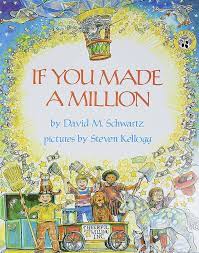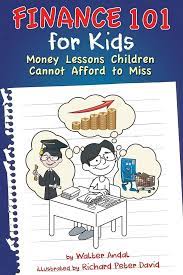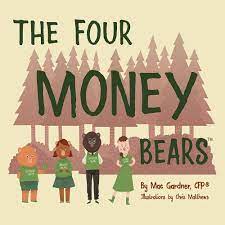In today’s fast-paced world, the importance of financial literacy cannot be overstated. It’s never too early to start educating children about money, and even 3-year-olds can begin to grasp some fundamental concepts. This article will explore trusted financial education resources designed specifically for preschoolers, helping them build a solid foundation for a financially savvy future.

Trusted Financial Education Resources for 3-year-olds
Why Start Early?
Before we dive into the resources, let’s understand why it’s crucial to initiate financial education at such a young age.
1. Setting a Strong Foundation
Teaching financial literacy to 3-year-olds lays the groundwork for responsible money management in the future. Early exposure to these concepts can shape their financial behaviors as they grow.
2. Encouraging Healthy Habits
Starting young helps instill healthy financial habits, such as saving, budgeting, and distinguishing between wants and needs. These habits can serve children throughout their lives.
Exploring Trusted Financial Education Resources
There are a number of trusted financial education resources available for 3-year-olds. Here are a few examples:
Books
Popular books about money and investing for 3 years old include:
- The Everything Kids’ Money Book: Earn it, Save it, and Watch it Grow! by Greg Farrell
- Moneybunny by Munro Leaf
- The Berenstain Bears’ Money Trouble by Stan and Jan Berenstain
Websites
MoneyAsYouGrow
MoneyAsYouGrow is a set of free financial resources provided by the Consumer Financial Protection Bureau (CFPB), a U.S. government agency that makes sure banks, lenders, and other financial companies treat you fairly.
Money as You Grow’s goal is to help parents and caregivers
No need to be a money expert—the tips and activities here can help your children’s money skills, habits, and attitudes grow.
Money as You Grow was recommended as an initiative by the President’s Advisory Council on Financial Capability, chaired by John W. Rogers and vice-chaired by Amy Rosen. The initiative, developed by Beth Kobliner, chair of the Council’s Money as You Grow working group, offered essential, age-appropriate financial lessons—with corresponding activities—that kids need to know as they grow. Written in down-to-earth language for children and their families, Money as You Grow helped equip kids with the knowledge they need to live fiscally fit lives. The lessons in Money as You Grow were based on more than a year of research, and drawn from dozens of standards, curricula, and academic studies.
The CFPB researched the way children develop the abilities and attributes that contribute to their financial well-being in adulthood. Additional research identified milestones for developing financial capability, and ways to measure it. With support from the Corporation for Enterprise Development and researchers from University of Wisconsin–Madison and University of Maryland, Baltimore County, we developed a framework that connects Money as You Grow activities to children’s financial developmental stages. With that framework in mind, we have updated and adapted the Money as You Grow activities and content.
Kids Financial Education – SageVest Kids
kidsfinancialeducation – SageVest Kids was created by Jennifer Myers, CFP, President of SageVest Wealth Management.
Jennifer is an award-winning financial advisor, dedicated to helping clients achieve financial success and fulfillment. Her decades of experience encountering varying financial circumstances made her acutely aware of the need for stronger financial literacy for our next generation.
Furthermore, as a hard-working single mother of two kids, she understands the time challenges that parents face.
The combination of Jennifer’s professional and personal outlooks led to the creation of SageVest Kids, which is designed to offer easy step-by-step instructions on how to prepare your kids for financial success.
SageVest states: “We’re honored to offer SageVest Kids as a resource for high-quality financial literacy guidance to all families, regardless of economic advantage. Every child deserves a strong financial education, regardless of their zip code or their family’s financial means. We offer SageVest Kids in hopes of promoting a brighter financial future for everyone.”
JumpStart
JumpStart is a national nonprofit coalition of more than 100 organizations from business, finance, academia, education, government and other sectors, as well as a network of 51 state affiliates, which share a commitment to “financial smarts for students.”
The Jump$tart Coalition works to raise awareness about the importance of financial literacy and the need for financial education, especially among youth; fosters collaboration among financial literacy stakeholders; and promotes and supports effectiveness in financial education endeavors.
Apps
- Allowance Tracker Kids
- Piggybot
- Savings Spree
Games and activities
- Money Match
- Piggy Bank Toss
- Lemonade Stand
Financial education programs
- Junior Achievement
- Money Smart Kids
- Operation HOPE
Tips for parents
Here are a few additional tips for parents who are teaching their 3-year-olds about money:
- Start with the basics. Teach your child about different types of money, how to count money, and how to make change.
- Use real-world examples. When you’re at the store, talk to your child about how much things cost and how you decide what to buy.
- Make it a family affair. Get everyone in the family involved in learning about money. You can play money games together, set financial goals together, and celebrate each other’s successes.
Implementing Financial Education at Home
To effectively teach financial education to 3-year-olds, consider the following tips:
1. Use Real Money
When using piggy banks and savings jars, use real money to create a tangible connection between children and currency.
2. Repetition is Key
Repeat lessons regularly to reinforce understanding. Children often need multiple exposures to a concept before it fully sinks in.
3. Set a Good Example
Children learn by observing. So, model healthy financial behaviors yourself. Discuss your own saving and spending decisions with your kids.
4. Make it Fun
Engage children in playful financial activities, such as setting up a pretend store, using play money, and having them “buy” items.
Conclusion
Teaching financial education to 3-year-olds may seem unconventional, but it’s a proactive step toward building a financially responsible future. Trusted resources like piggy banks, books, apps, games, videos, and workshops can make this process engaging and enjoyable.
Incorporating financial education into a child’s early years is an investment in their financial well-being, helping them navigate the complex world of money with confidence.
Frequently Asked Questions (FAQs)
1. Is it too early to teach financial education to 3-year-olds?
- Not at all! Early exposure to financial concepts can help children develop a strong foundation for responsible money management.
2. Are there any financial education apps suitable for preschoolers?
- Yes, several apps, like “PiggyBot” and “iAllowance,” are designed to teach kids about budgeting and saving in a fun and interactive way.
3. How can I make financial education engaging for my child?
- Incorporate play, use real money, and repeat lessons to make financial education enjoyable and memorable for your child.
4. Are there any financial education workshops for young children?
- Some organizations offer workshops specifically designed to teach financial literacy to young children, providing hands-on experiences and learning opportunities.
5. What is the importance of teaching children about money from a young age?
- Teaching children about money from a young age helps them develop responsible financial habits, make informed decisions, and become financially literate individuals as they grow.








